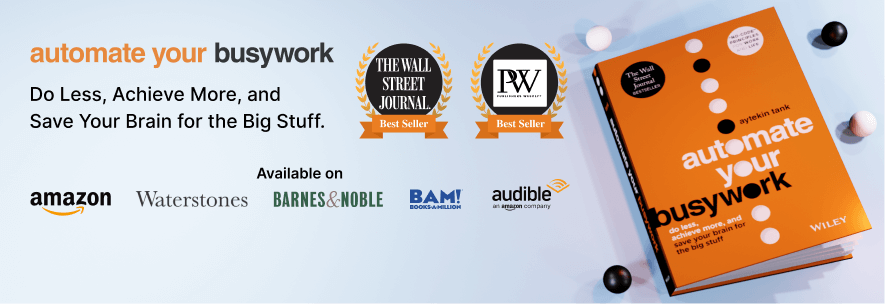Key Takeaways
- Chatbots provide scripted responses to simple queries, mainly for customer support.
- AI assistants handle tasks, such as scheduling and retrieving information, using machine learning.
- Chatbots follow predefined paths, while AI assistants adapt and learn from interactions.
- AI assistants enable more complex interactions, integrating with multiple apps and systems.
- The future of AI includes improved NLP, enhanced integration, and greater personalization.
- Jotform AI Agents automate interactions, creating dynamic, conversational experiences without coding.
Whether you realize it or not, you’ve likely interacted with AI assistants and AI chatbots before. Have you used a smart home device, for example, or chat support on a website? Artificial intelligence likely powered those tools.
AI assistants and chatbots are useful tools that transform how you do things at home and in the workplace. Many of these tools increase efficiency, minimize expenses, and improve customer experiences.
While they’re both powered by artificial intelligence, AI assistants and chatbots are different, and each technology is responsible for distinct functions. In this article, we’ll take a closer look at what each type of technology does, what sets them apart, and what the future of AI-powered tools looks like.
We’ll also introduce a third type of AI tool — an AI agent — and explain how it can transform your business operations.
Pro Tip
Enhance your customer support with the AI phone answering system, providing instant responses and automating calls. Get started now to improve efficiency and customer satisfaction!
What is a chatbot?
A chatbot is a type of software that’s designed to have conversations with users. Through text and audio interactions, chatbots can provide users with relevant responses to questions.
Businesses often use them in customer service settings to answer questions about products, services, purchases, and more.
“Think of chatbots as basic problem-solvers,” says Dhvanil Patel, vice president of sales and marketing for IT Path Solutions, a web and mobile app development company.
“They’re great at following a script, whether it’s answering simple questions or helping you book something,” Patel says. “But once you go off script or ask something more nuanced, they tend to hit a wall. They handle repetitive tasks well but lack any real understanding beyond what they’re programmed to do.”
Some chatbots are rules-based, which means they follow a set of predefined rules to provide responses. Increasingly, AI technology is powering chatbots, using machine learning (ML) and natural language processing (NLP) to understand context and respond to more complex conversations.
What is an AI assistant?
An AI assistant, or a virtual assistant, is a type of AI-powered technology that can complete simple administrative tasks such as scheduling appointments, pulling up data, providing directions, and controlling smart home devices when prompted.
It uses natural language processing, machine learning, deep learning, and artificial emotional intelligence to interact with users.
“AI assistants are on a different level than chatbots,” says Patel. “They don’t just stick to a script; they learn from interactions.”
Patel continues, “AI assistants can adapt, understand context, and handle a wider range of tasks. They can sync up with multiple apps, manage schedules, set reminders, and even carry out personalized tasks based on past behavior. Over time, they get smarter and more efficient.”
What are the key differences between chatbots and AI assistants?
Think of an AI assistant as a virtual personal helper. A chatbot, on the other hand, is more like a virtual FAQ system. A chatbot can answer your questions, and an AI assistant can carry out simple actions.
Here are some key differences between AI assistants and chatbots:
- Embedded technology: Chatbots are powered by simple decision trees. Some use AI-powered technology as well, but it’s not as complex as the artificial intelligence that runs AI assistants.
- Functionality: AI assistants often handle complex tasks and conduct personalized interactions with users, such as providing directions to a specific location the user has requested. In contrast, chatbots manage simple and scripted interactions with users and typically aren’t able to go off script.
- Complexity and learning ability: AI assistants use advanced machine learning algorithms that enable them to learn from interactions to inform future behavior. Chatbots follow predefined paths, so they can’t learn from user responses. They’re programmed to follow their decision tree.
- User interaction: AI assistants are designed for more engaging and sustained conversations with humans. For example, you can converse with a smart home device like Alexa and ask it to perform certain tasks or request suggestions and information on all sorts of topics. Chatbots’ scope is more limited. Users can ask them questions and get scripted responses, but they can’t have a detailed or nuanced conversation.
- Channels: Chatbots are typically run on user-facing websites and apps, providing customer service support. AI assistants can operate in smart home environments, transportation systems, scheduling software, calendar software, and other types of systems that are designed to complete specific tasks.
- User interface: Most chatbots have a text-based interface in which users can enter questions and responses. Some chatbots can also handle audio conversations. AI assistants use both text and audio commands to complete tasks.
| Chatbots | AI assistants | |
|---|---|---|
| Primary function | Answering simple questions and queries with scripted responses | Completing administrative tasks and assisting users |
| Interaction type | Primarily text with some audio | Text or audio |
| AI complexity | Simple or rules-based AI | Simple to moderately complex AI |
| Use cases | Customer support, customer service, FAQ, transactional conversations | Scheduling, retrieving information, providing personal assistance |
| Integration | Websites and mobile apps | Websites, mobile apps, operating systems, smart home devices |
| Real-world examples | Website customer support chat interfaces | Siri, Google Home, Alexa |
What will the future of chatbots and AI assistants look like?
We’re currently only in the infancy of artificial intelligence technology — it will continue to change and grow over time. What can we expect to see in the future for chatbots and AI assistants?
“AI assistants are getting better at predicting what you want and making your life easier,” says Erik Severinghaus, founder and CEO of Bloomfilter, a firm that offers AI-driven process mining for software development.
“In the future, your assistant can analyze your schedule, suggest the best ways to fix your to-do list, and facilitate emotional conversations. Consider a counselor who will talk and ask if you need a break or help you find ways to reduce stress based on your behavioral patterns. It’s about mental development and intelligence.”
Chatbots, on the other hand, will take on additional responsibilities. “The future of chatbots can be integrated with real-time data to provide better advice, faster responses, and better customer service. So, if you’re a business, chatbots are here to help you improve customer interactions,” says Severinghaus.
We’re going to see improved natural language processing, advanced contextual awareness, enhanced integration with third-party services, and robust security and privacy measures for both types of technology. In addition, we may even see some collaborations between chatbots and AI assistants.
“You can let chatbots handle simple, repetitive tasks, while AI assistants handle more complex and personalized tasks,” says Severinghaus. “Imagine walking into a store: A chatbot can guide you to the right department, [while] an AI assistant can predict your purchases, schedule deliveries and repairs, or predict your shopping needs.”
How can Jotform AI Agents transform your operations?
Chatbots offer relevant answers to simple questions, while AI assistants take things a step further and complete tasks for users. Want to see what else AI technology can do? Try using AI agents, which can autonomously make decisions and take actions in order to complete a specific goal.
“We’re at the beginning of something big. As AI continues to evolve, I believe we’ll see a world where technology is more human, not just in how it interacts with us, but in understanding our needs, emotions, and lives,” says Severinghaus.
You can get started using this new technology easily with Jotform AI Agents. This tool transforms online forms into dynamic conversational experiences — without you having to write any code.
Build Your Custom AI Agent in Minutes
With Jotform AI Agents, you can build and train your own AI agent that will both fill out a form automatically with the information a customer provides in a conversation and also answer any questions the customer might have.
Use Jotform AI Agents to collect information more intuitively from customers, prospects, and employees. Jotform lets you customize an AI agent from a directory, build one from scratch, or turn an existing form into an AI agent.
You can train the AI with relevant documents and information and make visual and tonal modifications with our AI Agent Builder. You’ll be able to streamline data collection for your organization while enhancing customer experiences.
The use cases for AI assistants and AI agents will continue evolving. The sooner you start taking advantage of this technology, the sooner your business will reap the benefits.
Photo by Mikhail Nilov




















Send Comment: